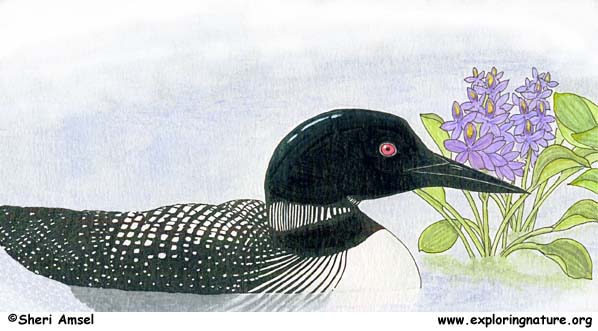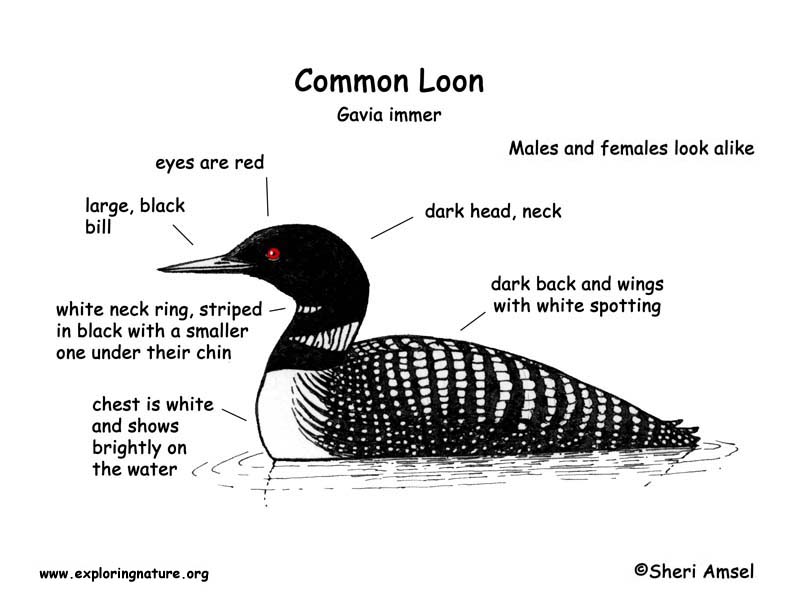

They spend the winter along both coasts in Alaska, Canada, the U.S. and in some places in Europe. In the summer, they breed all across Alaska, Canada, and the northern U.S. and in some places in Europe and Greenland.
They are found breeding on forest lakes and spending the winter near the shore of the ocean and on large open lakes.
Loons are large birds reaching up to 3 feet in length. They have a dark head, neck, and a dark back and wings with white spotting. Their chest is white and shows brightly on the water. They have a white neck ring, striped in black with a smaller one under their chin. Their eyes are red and their large bill is black. Males and females look alike.
They ride low in the water. Their yodel-like call is often heard at night. They need a big enough pond to make their “running” start to take off from the water.
They dive for fish, but sometimes eat other small animals on the lake.
Loons come to shore only to breed and nest. Their nest is made from water plants near the shore or sometimes on an island in the lake. The female lays 2-4 brown eggs with dark spots.
Kingdom: Animalia
Phylum: Chordata
Subphylum: Vertebrata
Class: Aves
Order: Gaviiformes
Family: Gaviidae
Genus: Gavia
Species: G. immer
When you research information you must cite the reference. Citing for websites is different from citing from books, magazines and periodicals. The style of citing shown here is from the MLA Style Citations (Modern Language Association).
When citing a WEBSITE the general format is as follows.
Author Last Name, First Name(s). "Title: Subtitle of Part of Web Page, if appropriate." Title: Subtitle: Section of Page if appropriate. Sponsoring/Publishing Agency, If Given. Additional significant descriptive information. Date of Electronic Publication or other Date, such as Last Updated. Day Month Year of access < URL >.
Amsel, Sheri. "Loon (Common)" Exploring Nature Educational Resource ©2005-2024. December 13, 2024
< http://www.exploringnature.org/db/view/163 >

